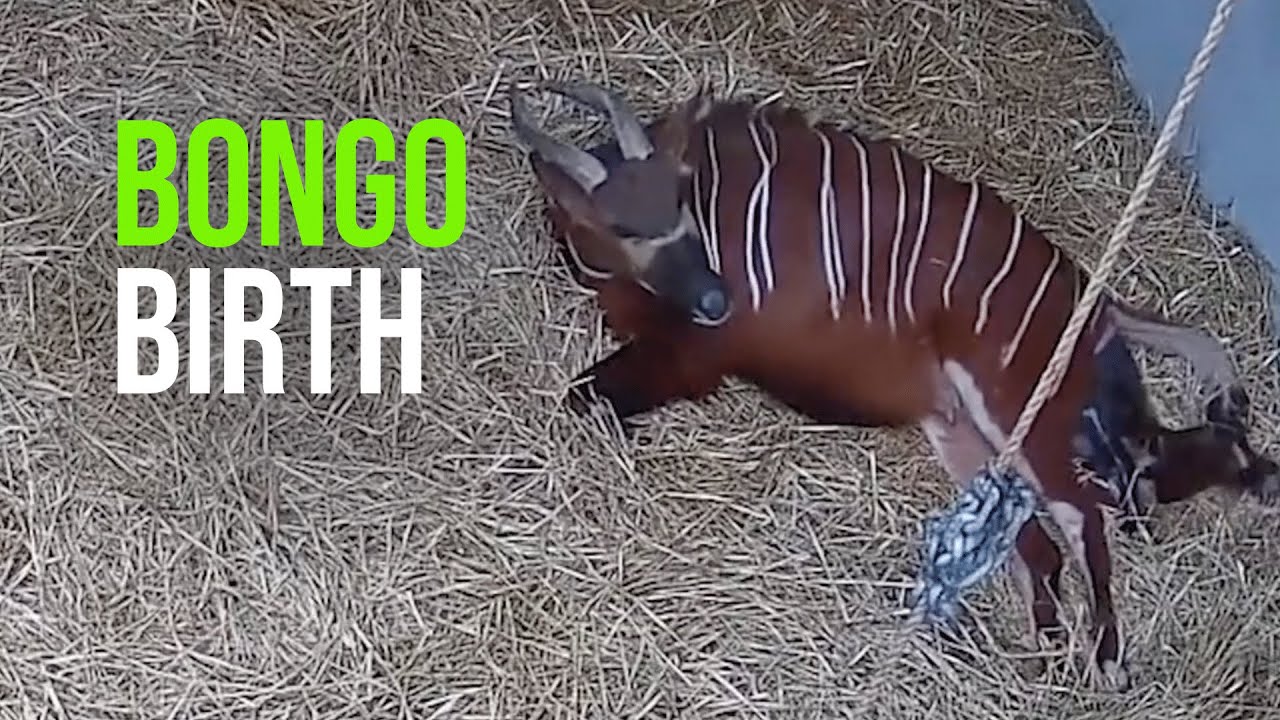- The birth of a bongo captured on camera highlights the intricate life processes and conservation significance of this endangered species.
- The unique physical and behavioral characteristics of bongos and their role in their natural habitat offer insights into their ecological importance.
- The role of zoos in managing and conserving bongo populations while balancing ethical considerations and educational goals.
- The technological advancements in wildlife observation, including video documentation, contribute to the understanding and preservation of rare and endangered species.
- Collaborative global efforts in wildlife conservation emphasize the need for sustained action to protect bongos and similar species at risk of extinction.
The birth of a bongo caught on camera is a rare and fascinating study of a significant event for wildlife enthusiasts and conservationists. Bongos, a type of antelope native to the dense forests of Central Africa, are known for their distinctive appearance and elusive behavior. Their birth captured on video offers an extraordinary glimpse into the delicate balance of life and the challenges facing a species at risk. This revelation serves not only as a wonder of nature but also as a vital educational tool, reflecting the importance of technology in wildlife conservation.
Bongos are large forest antelopes characterized by striking chestnut coats adorned with vertical white stripes. These markings, along with their large spiraled horns, make them one of the most impressive species in the animal kingdom. They play a critical role within their ecosystem as browsers, aiding in the control of vegetation and providing a food source for predators. Understanding the bongo’s role in its natural habitat is crucial for biodiversity. Observations from the birth event enhance the knowledge needed to develop effective conservation strategies.
The birth footage underscores the significance of zoos in species conservation. Modern zoos, guided by ethical considerations, strive to create environments that mimic natural habitats, aiming to preserve genetic diversity and foster education. The video of the birth helps inform breeding programs and reveals the care required to manage bongo populations responsibly. Zoos provide a controlled setting where scientific studies can refine strategies for maintaining health and population stability among these animals. The data gathered adds to the global repository of wildlife information essential for informed conservation efforts.
Advancements in technology are transforming how we study and understand wildlife. The ability to capture high-quality video footage of elusive species such as the bongo provides unprecedented insights into animal behavior and the challenges they face in the wild. This technological leap allows researchers to observe and document aspects of wildlife that were previously inaccessible, leading to informed conservation initiatives and providing content for educational materials that raise public awareness.
Conservation efforts for bongos involve international collaborations, recognizing that protecting these creatures requires sustained and coordinated action. Cross-border initiatives, driven by organizations such as the International Union for Conservation of Nature (IUCN), work to protect habitats, counter poaching, and address the impact of human encroachment. These efforts are crucial, as the bongo’s populations have been fragmented due to habitat loss and hunting pressure. By collaborating globally, the conservation community can pool resources and share insights to bolster strategies that ensure the survival of bongos and other endangered species.
The birth of a bongo caught on camera encapsulates the intersection of animal behavior, conservation, and technological innovation. While the footage provides a window into the life of this majestic creature, it also highlights the broader challenges facing wildlife conservation in the modern era. The continuous exchange of knowledge and the commitment to protecting natural habitats are integral to ensuring that the species, like the bongo, are not lost to future generations.
In capturing the birth of a bongo, the power of technology in aiding wildlife conservation becomes evident. The footage serves multiple purposes: It provides critical insights into the species’ reproductive behaviors and underscores the pressing need for more comprehensive conservation measures. As researchers continue to leverage technology, the understanding and appreciation of such species deepen, paving the way for more informed and effective wildlife management.
Overall, the birth event captured on video stands as a testament to how pivotal moments in wildlife can drive efforts in education and conservation. Through the proper use of technology and collaborative conservation strategies, there is hope that species like the bongo will not only survive but thrive in the coming years. The ongoing commitment of institutions worldwide to sustainable practices and public education remains fundamental to biodiversity preservation.
*****
Source Description
@ZOOPlanckendael has welcomed its first birth of 2023! Bongo Hikani has given birth to a beautiful baby.
Both mom and baby are doing great! This is Hikani’s first calf, but the delivery went very smoothly. Bongo Lucah is the lucky father.
ZOO Planckendael’s vet made a baby visit today and can confirm it’s… a boy! The little bongo will be the first to receive a name with the letter Y this year. That is the case for every animal born in 2023 in our zoo.
For the time being baby Y will stay nice and warm with mom Hikani in the stable and unfortunately you can’t spot him in his outdoor enclosure yet. To make up for it, the Zoo would like to share these unique birth images with you!

